
CLnZyme
GMP & Eu-GMP grade
All CLnZymes are produced in globally verified cGMP & Eu-GMP grade facility
located in Germany and will give you the benefits as follows :

CLnZyme T7 RNA Polymerase
CLnZyme T7 RNA Polymerase is the recombinant T7 RNA polymerase that catalyzes the formation of RNA from DNA in the 5' → 3' direction in T7 bacteriophage. T7 RNApolymerase is extremely promoter-specific and transcribes only DNA downstream of a T7 promoter. T7 RNA polymerase also requires a double stranded DNA template and
Mg2+ ion as cofactor for the synthesis of RNA. This T7 RNA Polymerase has been used in in vitro transcription (IVT) to synthesize any types of RNA-related vaccines and
therapeutics including mRNA-based vaccines and therapeutics.

FUNCTION
-
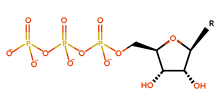 A ribonucleoside
A ribonucleoside
5’-triphosphate -
 RNA(n)
RNA(n) -
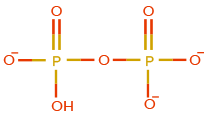 Dishosphate
Dishosphate -
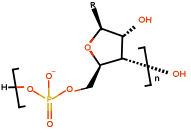 RNA(n+1)
RNA(n+1)
-
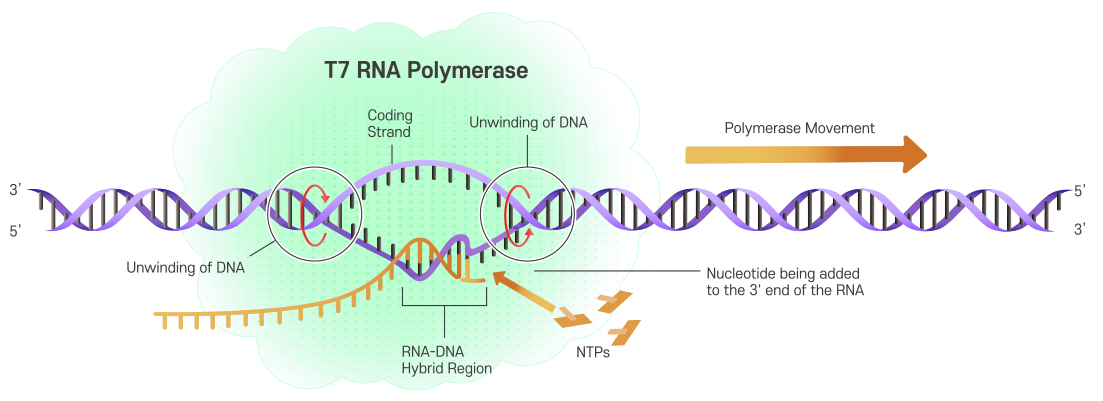 [Genomic Research, March 25, 2021 / jonathan Dormell]
[Genomic Research, March 25, 2021 / jonathan Dormell]
APPLICATION
- 01In vitro transcription
- 02Synthesis of various RNAs
CLnZyme Pyrophosphatase
CLnZyme Pyrophosphatase is the recombinant inorganic pyrophosphatase (PPase) which catalyzes the breakdown of pyrophosphate (PPi) totwo molecules of phosphate (PO4). The reaction releases energy and is irreversible, hence it is coupled to biochemical reactions which need to
be driven to completion. This pyrophosphatase plays a role in lipid metabolism, calcium absorption, bone formation and DNA synthesis.
Pyrophosphatase requires a divalent metal ion like Mg2+ for higher activity. PPi is formed in many biosynthetic reactions which require ATP. This
pyrophosphatase is added in order to remove the inorganic pyrophosphates which will be white precipitates after the transcription reaction and
suppress the transcription elongation.

FUNCTION
-
 Diphosphate
Diphosphate -
 H2O
H2O -
 H+
H+ -
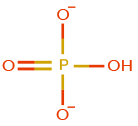 Phoshate
Phoshate
APPLICATION
- 01Improvement the yield of in vitro transcription
- 02Removal of accumulation of pyrophosphate
- 03Hydrolysis of inorganic pyrophosphate
- 04Enhancement of DNA replication
CLnZyme DNase I
CLnZyme DNase I is the recombinant DNase I which is a deoxyribonuclease that cleaves DNA preferentially at phosphodiester linkages adjacentto a pyrimidine nucleotide, yielding 5'-phosphate-terminated polynucleotides with a free hydroxyl group on position 3', on average producing
tetranucleotides. It acts on single-stranded DNA, double-stranded DNA, and chromatin. In addition to its role as a waste-management
endonuclease, it has been suggested to be one of the deoxyribonucleases responsible for DNA fragmentation during apoptosis. DNase I
nonspecifically catalyzes the degradation of both single- and double-stranded DNA, and DNA-RNA hybrids, producing 5'-phosphate and
3'-hydroxyl termini-containing oligonucleotides of varying lengths.

FUNCTION
APPLICATION
- 01Removal of DNA templates following in vitro transcription
- 02Any genomic DNA digestion prior to PCR or RT-PCR
- 03DNA footprinting
- 04Digestion of unwanted DNA from samples
- 05Nick translation
CLnZyme Proteinase K
CLnZyme Proteinase K is the recombinant Proteinase K which is a highly reactive nonspecific serine protease with broad cleavage specificity onnative and denatured proteins and belongs to the subtilisin family of proteins. This proteinase K cleaves at the carboxylic acid side of aliphatic,
aromatic, or hydrophobic amino acids of any proteins. This proteinase K has the function to inactivate RNases and DNases, and can be used in
the isolation or preparation of high molecular weight nucleic acids. This proteinase K is routinely used for the purification of target material from
contaminating proteins, for the isolation of RNA and DNA.

FUNCTION
APPLICATION
- 01Removal of any proteins and enzymes following in vitro transcription
- 02Isolation of plasmid, genomic DNA and RNA
- 03PCR purification






